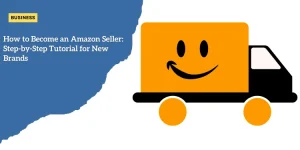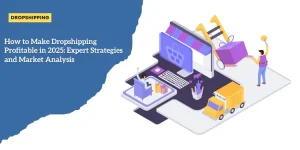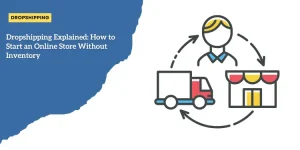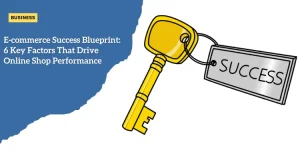Mastering Amazon Dropshipping in 2025: From Setup to Scale – A Comprehensive Guide
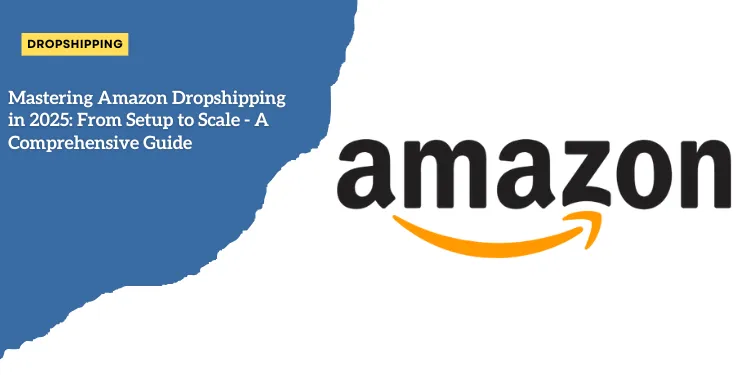
Anúncios
Definition and Core Concept of Amazon Dropshipping Business Model
Amazon dropshipping is a business model where you sell products on Amazon without physically holding inventory.
Instead, when a customer orders an item, you purchase it from a third-party supplier who ships it directly to the customer.
Anúncios
This model frees you from the costs and logistics of inventory management, and allows you to focus on marketing and customer service.
Amazon’s Official Stance and Policy on Dropshipping
While Amazon allows dropshipping, they have strict policies to ensure a high level of customer experience.
First and foremost, you must be the seller of record on all packing slips, invoices, and any other information included with the product.
Anúncios
All information identifying the third-party seller must be removed before shipping the order to customers.
Additionally, you are responsible for accepting and processing returns. Compliance with these rules is crucial to maintain your account health and avoid penalties or suspension.

Key Differences Between Dropshipping and Traditional Retail Models
Dropshipping on Amazon differs significantly from traditional retail models:
- Inventory Management: Traditional retail requires you to purchase and store inventory upfront, potentially leading to overstock or stockouts. Dropshipping eliminates this risk since you only buy products after making a sale.
- Capital Requirement: Traditional retail models can require considerable initial investment due to inventory purchase, storage, and handling costs. In contrast, dropshipping requires less upfront capital as you don’t buy products before selling them.
- Logistics and Fulfillment: In a traditional retail model, you handle all aspects of order fulfillment, from packing and shipping to managing returns. In dropshipping, the supplier takes care of these logistics, allowing you to focus on other aspects of the business.
Understanding these foundational aspects of Amazon dropshipping will set you up for success in navigating and growing your business on this platform.
Next, we will delve into the practical steps for setting up your Amazon dropshipping business.
Getting Started: Setting Up Your Amazon Dropshipping Business
Embarking on your Amazon dropshipping journey starts with setting up your seller account.
This chapter will guide you through the process, required documentation, and initial setup requirements, and help you choose between Individual and Professional seller plans.
Step-by-step Process for Creating an Amazon Seller Account
- Sign Up for an Amazon Seller AccountTo start your Amazon dropshipping business, you need to create a seller account. Head to Amazon Seller Central to sign up. You will need the following information:
- Business email address
- Internationally chargeable credit card
- Government ID
- Tax information
- Phone number
- Bank account for receiving sales
- Get Approval in Your Product Category (if Necessary)Certain product categories require Amazon’s approval before you can list them. Categories like collectibles, music, and watches fall under this category. Check Amazon’s overview of product categories to see if approval is needed. Even if the category doesn’t require approval, specific products within a category might. Use the Amazon Product Opportunity Explorer to monitor customer demand for products over time.
- Connect Your Store to Amazon (Optional but Recommended)If you have an online store, integrating it with Amazon can streamline your dropshipping operations. Platforms like Shopify offer apps such as Marketplace Connect and CedCommerce that can automate order fulfillment, sync inventory, and update tracking information.
Required Documentation and Initial Setup Requirements
During the account setup, you need to provide:
- Business Email Address: A valid and professional email address linked to your business.
- Internationally Chargeable Credit Card: This is required to handle Amazon fees and other expenses.
- Government ID: A government-issued identification for verification purposes.
- Tax Information: Essential for tax compliance and reporting.
- Bank Account Information: This is where Amazon will deposit your sales revenue.
Choosing Between Individual vs Professional Seller Plans
Amazon offers two types of seller plans: Individual and Professional.
The choice depends on your business goals and expected sales volume.
- Individual Plan: Best for those who plan to sell fewer than 40 items per month. It’s a pay-as-you-go plan with no monthly subscription fee but a $0.99 fee per item sold.
- Professional Plan: Suitable for sellers with a high sales volume. It costs $39.99 per month with no per-item fee. This plan provides access to advanced selling tools, bulk listing, and eligibility for top placement on product detail pages.
Understanding these elements is pivotal to your initial setup and operational goals for your Amazon dropshipping business.
Once your account is ready, you are set to dive into the finer aspects of compliance and customer service.
Navigating Amazon’s Dropshipping Rules and Requirements
Understanding Amazon’s policies and rules is crucial for operating a successful dropshipping business on the platform.
Let’s break down the key elements you need to consider.
Detailed Breakdown of Amazon’s Dropshipping Policies
Amazon has explicit rules that you need to follow to maintain your dropshipping privileges. Here are the important policies to understand:
- Sole Seller of Record: You must be the sole seller of record for your products. This means your business name should appear on all packing slips, invoices, and any other information connected with the products.
- Third-Party Information: Remove all identifying information from third-party suppliers before shipping the orders to your customers. This helps in avoiding any confusion and ensures a smoother customer experience.
- Returns Processing: You are responsible for accepting and processing returns directly.
- Seller Agreement Compliance: Always adhere to the terms of your seller agreement and Amazon’s dropshipping policy.
Compliance Requirements for Being the Seller of Record
Being the seller of record means that your business is responsible for every aspect of the customer transaction, from order fulfillment to handling returns.
Here are steps to ensure compliance:
- Information Accuracy: Always ensure that your business information is accurate on all documentation.
- Branding: Your brand name should be prominently displayed, and there should be no trace of the third-party supplier.
- Record Management: Maintain proper records of all transactions, including invoices and packing slips.
Handling Customer Returns and Service Responsibilities
Customer satisfaction is paramount on Amazon.
Here is how you can handle returns and provide excellent customer service:
| Strategy | Description |
|---|---|
| 🔄 Return Policy | Define and communicate your return policy clearly. Ensure you accept returns directly and issue refunds according to Amazon’s guidelines to avoid disputes and maintain trust. |
| 📞 Customer Support | Be prompt, professional, and responsive in addressing customer inquiries and complaints. Set up a dedicated support system for efficient management of all customer service aspects. |
| 📝 Feedback Management | Use tools like FeedCheck to monitor reviews and respond promptly to issues. Managing feedback effectively helps maintain a positive seller rating and improve customer satisfaction. |
Master these rules, and you’ll be better equipped to navigate Amazon’s policies, ensuring a smoother operation of your dropshipping business while fostering customer trust and satisfaction.
Selecting and Managing Suppliers
Criteria for Evaluating Potential Dropshipping Suppliers
Selecting the right suppliers is crucial for your Amazon dropshipping business.
A reliable supplier ensures timely delivery, maintains product quality, and minimizes your customer service headaches. Here are the key criteria to consider:
- Reliability: Ensure the supplier has a reputation for consistent, on-time deliveries and accurate order fulfillment. Verify this by checking reviews and testimonials from other dropshippers.
- Product Quality: The supplier should offer products that meet or exceed competitors’ quality. Request samples to evaluate.
- Shipping Capabilities: The supplier must provide reliable shipping to your customers’ locations and offer competitive shipping times.
- Customer Service: Strong, responsive customer support is essential. Check if they offer live support and assess their response times.
- Pricing: Low per-order fees are crucial to safeguard your profit margins. Avoid suppliers with hidden charges.
- Experience: Suppliers who have a track record with other successful dropshippers are a safe bet.
Ensuring these criteria are met will help you build a robust and reliable supply chain.
How to Establish Reliable Supplier Relationships
Building solid relationships with suppliers is integral for smooth operations and mutual success.
Here are some strategies:
- Communicate Regularly: Keep open lines of communication. Discuss any issues and updates from both sides to avoid misunderstandings.
- Clear Terms: Establish clear terms of service, including fulfillment timelines, return policies, and pricing. A written agreement helps prevent future disputes.
- Build Trust: Cultivate trust with your suppliers. Be transparent about your business needs and pay on time. This reliability fosters long-term relationships.
- Leverage Technology: Use technology to streamline interactions and monitor inventory. Tools like inventory management software can help automate updates and orders, ensuring you stay in sync with your supplier.
Managing Supplier Communications and Order Fulfillment
Effective communication and order management with suppliers are pivotal for a seamless dropshipping operation.
Here’s how:
- Automated Communication: Utilize platforms like Slack or dedicated supplier communication tools to manage queries and updates efficiently.
- Order Management Systems: Implement systems like Shopify or other inventory management technologies to track orders and inventory in real-time.
- Performance Monitoring: Regularly review supplier performance based on delivery times, order accuracy, and product quality. Address any issues promptly to maintain a high standard of service.
- Feedback Loop: Create a feedback loop to continuously improve processes. Share customer feedback with your suppliers to help them enhance their service and product offerings.
Managing these aspects effectively will ensure that your operations run smoothly, ultimately leading to higher customer satisfaction and business success.
With the importance of supplier management understood, you’re well-equipped to establish a durable and efficient supply chain for your Amazon dropshipping business.
Transitioning to the next essential aspect, understanding product strategy, and optimizing your listings will further fortify your business model.
Product Strategy and Listing Optimization
Techniques for Product Research and Selection
Selecting the right products to sell in your Amazon dropshipping store is crucial.
The goal is to identify products that have high demand but low competition.
Start by exploring Amazon’s top categories and bestseller lists to spot trending items.
Use tools like MerchantWords to analyze keyword trends and understand what customers are searching for.
When researching, consider the following criteria:
- Demand: Choose products with a steady and increasing sales volume.
- Competition: Avoid highly saturated markets where too many sellers offer similar products.
- Profit Margins: Ensure the difference between your selling price and supplier cost allows for a reasonable profit after Amazon fees.
- Supplier Reliability: Select suppliers with positive ratings and reliable fulfillment capabilities to ensure customer satisfaction.
Creating Compelling Product Listings That Convert
Creating an engaging and informative product listing is key to ensuring a high conversion rate.
Here’s a checklist for an effective product listing:
- Product Titles: Use relevant keywords while keeping the title clear and concise. A well-structured title might include the brand, key features, and main benefits.
- Bullet Points: Utilize the “About This Item” section to highlight unique selling propositions in easy-to-read bullet points.
- Descriptions: Write detailed descriptions that provide all necessary information while also engaging the reader. Use natural language and focus on solving customer problems.
- Customer Reviews: Encourage satisfied customers to leave positive reviews and respond to customer questions promptly.
Optimizing Product Titles, Descriptions, and Images
Optimization matters because it influences how well your products rank in Amazon’s search results.
Follow these tips for optimization:
- Keywords: Integrate high-ranking keywords naturally in titles and descriptions without keyword stuffing.
- Images: Use high-resolution images from multiple angles. Include lifestyle images to help customers visualize the product in use.
- Descriptions: Break down the text into shorter paragraphs and use subheadings to improve readability. Highlight key features and benefits early in the description.
For optimizing customer engagement:
- Competitor Analysis: Examine top competitors’ listings to see what they are doing right and find gaps you can fill.
- Continuous Improvement: Regularly update your listings based on performance metrics and customer feedback.
Transitioning to the next phase, mastering these strategies will set a strong foundation for listing excellence, paving the way for effective marketing and promotion strategies, to maximize your product visibility and sales on Amazon.
Tools and Software for Amazon Dropshipping
Essential Software Tools for Inventory and Order Management
Managing inventory and orders efficiently is crucial for a successful Amazon dropshipping business.
Here are some essential software tools to help streamline these processes:
- Sellery
Sellery is a powerful real-time Amazon repricing software. It helps you stay competitive by suggesting repricing strategies aimed at winning the Buy Box and increasing sales. The software adapts instantaneously to market changes, allowing you to maintain optimal pricing. It offers a trial version for free, and paid plans start at 1% of your gross monthly sales with a minimum fee of $50 per month. - FeedCheck
This tool monitors customer reviews, enabling you to respond promptly across Amazon and other sales channels. By analyzing your competitors’ product reviews and questions, you can improve your product descriptions and customer service strategies.
Pricing and Market Research Tools Recommendations
Choosing the right products and pricing them competitively are vital aspects of Amazon dropshipping.
To achieve this, leveraging the right market research tools is essential:
- MerchantWords
MerchantWords checks search volume and data for product keywords. Understanding which keywords to target can guide your product selection and help you create listings that increase visibility and sales. Paid plans for MerchantWords start at $35 per month.
Automation Solutions for Scaling Operations
Automation is key to scaling an Amazon dropshipping business effectively.
By automating repetitive tasks, you can save time and focus on growth strategies:
- Marketplace Connect
This tool connects your Amazon store to platforms like Shopify, automating order fulfillment and updating tracking information for customers in real-time. It also ensures that inventory is always synchronized, reducing the risk of stockouts or overselling. - CedCommerce
CedCommerce offers multiple integration options that bridge Amazon and other e-commerce platforms. Their solutions enable you to automate listings, manage inventory seamlessly, and handle order fulfillment efficiently.
Optimizing these tools will significantly enhance your operational efficiency and allow you to focus on scaling your business without compromising quality or customer satisfaction.
Marketing and Promotion Strategies
Effective Use of Amazon Sponsored Products Ads
Amazon Sponsored Products ads are a powerful tool for boosting your dropshipping business.
These ads operate on a cost-per-click (CPC) model, meaning you only pay when a shopper clicks on your ad.
Here’s how to maximize their effectiveness:
- Target the Right Keywords: Use tools like MerchantWords to find high-volume keywords relevant to your products. Focus on long-tail keywords to target more specific searches, which can result in higher conversion rates.
- Optimize Your Bids: Experiment with different bid amounts. Start with automated bidding to let Amazon set your bids based on the likelihood of conversion, then switch to manual bidding for more control.
- Create Compelling Ad Content: Ensure your product titles and images are compelling and accurately represent your products. Write clear and enticing “About This Item” bullet points to attract clicks.
- Monitor and Adjust: Keep an eye on your ad performance through Amazon’s advertising reports. Adjust your keywords, bids, and budgets based on what works best.
Leveraging Social Media for Product Promotion
Social media is a cost-effective way to promote your Amazon products and drive traffic to your listings.
Here’s how to leverage it:
- Choose the Right Platforms: Focus on platforms like Instagram, Facebook, and Pinterest, where visual content excels. TikTok can also be effective for showcasing trending products.
- Create Engaging Content: Use high-quality images and videos to showcase your products. Create Instagram Reels or TikTok videos demonstrating the product in use. Run Facebook ad campaigns targeting your ideal demographic.
- Collaborate with Influencers: Partner with influencers in your niche to reach a broader audience. Provide them with free products in exchange for a review or shoutout.
- Engage with Your Audience: Respond to comments and messages promptly. Use social media to build a relationship with your customers and encourage them to share their purchase experiences.
Strategies for Organic Visibility and Ranking
Boosting your organic visibility on Amazon is crucial for long-term success.
Here are strategies to improve your search rankings:
- Optimize Product Listings: Ensure your product titles, descriptions, and images are optimized for search. Use relevant keywords throughout your listings but avoid keyword stuffing. Make your listings detailed and informative.
- Utilize A+ Content: If you’re a brand-registered seller, use Amazon’s A+ Content feature to enhance your descriptions with rich media and detailed information. This can improve conversion rates and customer trust.
- Encourage Positive Reviews: Ask satisfied customers to leave positive reviews. Avoid fake reviews as Amazon’s algorithm can detect and penalize such practices. Focus on excellent customer service to naturally garner good reviews.
- Price Competitively: Keep an eye on your competition and adjust your prices accordingly. Use tools like Sellery to manage your pricing strategies and stay competitive.
- Optimize Inventory and Shipping: Ensure your products are always in stock and utilize fast, reliable shipping. Products with Prime eligibility often rank higher due to faster delivery options.
By mastering these marketing and promotional strategies, you’ll increase your product visibility, attract more customers, and enhance the overall profitability of your Amazon dropshipping business.
Financial Management and Profitability
Understanding Amazon Fees and Pricing Structure
When engaging in dropshipping on Amazon, it’s crucial to understand their fee structure to manage costs and optimize profitability.
Amazon charges referral fees and account subscription fees that vary by product category.
- Referral Fees: These fees range between 8% and 15% of the product price based on the product category. While electronics might incur an 8% fee, other categories such as jewelry or furniture might be at the higher end.
- Account Subscription Fees: Amazon offers two main plans—the Individual plan costs $0.99 per item sold, while the Professional plan costs $39.99 per month regardless of the number of items sold.
Understanding these fees is essential for assessing the overall cost structure and planning your pricing strategy.
Calculating Profitable Margins in Dropshipping
Profit margins in dropshipping can vary significantly based on product selection, supplier pricing, and selling price.
Here’s how to ensure you are calculating profitable margins:
- Identify All Costs: Include the product purchase price, Amazon fees (referral and subscription), shipping costs if not handled by the supplier, and any marketing expenses.
- Set a Competitive Yet Profitable Price: Research similar products to determine a competitive selling price. Ensure this price covers all costs and leaves room for profit.
- Monitor and Adjust: Continuously monitor product performance and adjust prices as necessary to maintain competitiveness and profitability.
Strategies for Minimizing Costs and Maximizing Profits
Managing costs effectively while maximizing profits is the cornerstone of a successful dropshipping business.
Here are some strategies to achieve this:
- Optimize Supplier Relationships: Negotiate better terms with suppliers, such as discounts on bulk purchases, or faster shipping at lower rates.
- Leverage Software Tools: Use tools like MerchantWords, Sellery, and FeedCheck for market research, pricing optimization, and competitor analysis. These tools help manage inventory efficiently and identify high-margin products.
- Efficient Order Fulfillment: Ensure timely and cost-effective order fulfillment by integrating with suppliers who can handle packaging and shipping efficiently.
- Marketing Efficiency: Utilize low-cost marketing strategies such as optimizing product listings for organic searches and leveraging social media for unpaid promotions. Paid advertising, like Amazon Sponsored Products ads, should be used strategically to boost high-potential products.
By understanding Amazon’s fee structure and employing these strategies, you can minimize costs and maximize your profitability in the competitive dropshipping landscape.
This chapter has laid the groundwork for managing the financial aspects of your Amazon dropshipping business, ensuring you are equipped to handle costs and optimize profits effectively.
Scaling Your Amazon Dropshipping Business
Methods for Expanding Product Lines and Categories
Scaling your Amazon dropshipping business can be an exciting venture.
One effective method is to expand your product lines and categories. This strategy not only increases your potential customer base but also minimizes risks associated with depending on a narrow range of products.
Identifying Market Trends
Expanding your product portfolio requires meticulous research. Utilize tools like MerchantWords to identify trending categories and high-demand products with relatively low competition.
Keep an eye on current market trends, seasonal demands, and emerging niches. This can help you identify profitable opportunities and stay ahead of the competition.
Diversifying Product Offerings
Once you have identified potential new products, it’s crucial to diversify your product offerings.
This involves adding products that complement your existing range, such as accessories or related items, to create bundles or cross-sell opportunities.
For instance, if you sell kitchen gadgets, consider adding complementary items like cookbooks or unique utensils.
Automating Processes for Growth
Automation is a key factor in scaling your Amazon dropshipping business.
Leveraging automation tools can streamline your operations, reduce manual work, and improve accuracy. Here are some strategies to consider:
Inventory and Order Management
Using software like Sellery and Marketplace Connect can significantly enhance inventory management and order fulfillment processes. These tools help keep track of stock levels, update inventory in real-time, and automate order processing.
Automation ensures that your business runs smoothly even as you handle a higher volume of transactions.
Customer Service Automation
Excellent customer service is vital for maintaining seller ratings on Amazon.
Utilize customer support tools to handle routine inquiries and issues efficiently. Automated email responses, chatbots, and CRM systems can offer quick resolutions, keeping your customers satisfied while allowing you to focus on scaling your operations.
Strategies for Maintaining Quality While Scaling Operations
As you scale, maintaining product and service quality becomes increasingly challenging but is crucial for long-term success. Here’s how to ensure high standards:
Quality Control and Supplier Management
Regularly evaluate your suppliers to ensure they meet your quality standards. Set up a quality control process to monitor product quality and supplier performance.
Building strong relationships with reliable suppliers can minimize risks and ensure consistent product quality.
Customer Feedback and Reviews
Monitoring and responding to customer feedback can provide valuable insights.
Tools like FeedCheck allow you to track reviews and suggestions, helping improve your products and listings. Addressing concerns promptly enhances your brand reputation and customer loyalty.
Scaling your Amazon dropshipping business effectively requires strategic planning and efficient automation. Maintain a balance between growth and quality to create a sustainable and profitable business.
Alternative Models and Future Outlook
Exploring alternative Amazon selling models and staying updated with industry trends is crucial for long-term success.
As you scale your dropshipping operations, understanding different options like Fulfillment by Amazon (FBA) and keeping an eye on emerging trends can help you navigate future challenges and seize opportunities.
Comparing Dropshipping and FBA
Fulfillment by Amazon (FBA) is a popular alternative to dropshipping. In the FBA model, sellers send their inventory to Amazon’s fulfillment centers. Amazon then handles storage, packaging, and shipping, offering Prime shipping benefits to customers.
This model can be more profitable than dropshipping due to higher customer trust and faster delivery. However, it also involves significant upfront investments in inventory and storage fees.
Key differences between dropshipping and FBA include:
- Inventory Management: Dropshipping eliminates the need to hold inventory, while FBA requires warehousing products at Amazon’s facilities.
- Control and Flexibility: Dropshipping offers more control over your product range and flexibility in testing new products. With FBA, changes to inventory and products can be slower and more costly.
- Fulfillment Speed: FBA typically offers faster shipping options, which can boost customer satisfaction and conversion rates.
Both models have their pros and cons.
Choosing between dropshipping and FBA will depend on your business goals, budget, and preference for control versus convenience.
Emerging Trends in Amazon Dropshipping for 2025
Keeping abreast of emerging trends can help you stay competitive and adapt to market changes.
Here are some notable trends shaping the future of Amazon dropshipping:
- AI-Driven Product Recommendations: Artificial intelligence tools are becoming more sophisticated in predicting customer preferences. Using AI-driven product research and personalized recommendations can give you a competitive edge.
- Sustainable Products: The demand for eco-friendly and sustainable products is rising. Offering green products can attract environmentally conscious consumers and differentiate your brand.
- Enhanced Automation: Automation tools are set to become even more integral. These tools streamline everything from supplier communication to order fulfillment, reducing manual work and human errors.
Potential Challenges and Opportunities Ahead
As with any business model, Amazon dropshipping presents unique challenges and opportunities, especially looking towards 2025.
Challenges
- Increased Competition: The ease of starting a dropshipping business means more players entering the market. You must stay innovative and agile to remain competitive.
- Policy Changes: Amazon frequently updates its selling policies. Staying compliant requires regular monitoring of policy changes and adapting your business practices accordingly.
- Supplier Reliability: Ensuring consistent quality and reliability from suppliers can be challenging. Establishing robust supplier relationships and having contingency plans is crucial.
Opportunities
- Global Expansion: Amazon’s continued global expansion offers opportunities to tap into new markets. Researching and understanding international markets can lead to substantial growth.
- Brand Building: Differentiating through strong branding and customer engagement can set you apart from competitors. Invest in building a distinct brand identity and enhancing customer loyalty.
- Technological Advancements: Leveraging new technologies, such as AI and machine learning, can optimize operations, improve customer service, and enhance decision-making processes.
By understanding and adapting to these trends and challenges, you can position your Amazon dropshipping business for continued success.
As we conclude this discussion on alternative models and future outlooks, it’s vital to stay versatile and forward-thinking in your approach.
Embrace new trends, explore different selling models, and be prepared to adapt to industry changes to ensure sustained growth and success.

